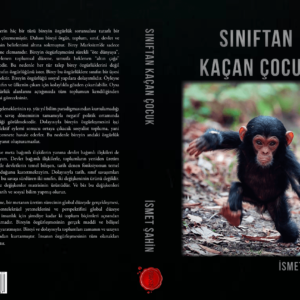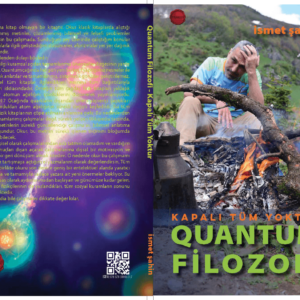
Physiological Challenges and Adaptations in Ultra Trail Running

Physiological Challenges and Adaptations in Ultra Trail Running
Ultra trail running poses significant physiological challenges and adaptations in athletes, particularly affecting the cardiovascular, muscular, and skeletal systems. Long-term endurance running impacts heart health, joint stress, and muscle adaptation. Training strategies must balance performance optimization with injury prevention to sustain an athlete’s health and capabilities over time.
Cardiovascular System Adaptations
Ultra trail running enhances cardiovascular efficiency through sustained aerobic exercise. Runners often experience an increase in cardiac output and stroke volume due to the body’s adaptation to prolonged physical stress. These adaptations can reduce resting heart rate and improve oxygen utilization. However, the prolonged stress can also pose risks, such as atrial fibrillation or other cardiac issues.1
Research indicates that endurance runners develop higher levels of plasma volume, which contributes to better oxygen transport and overall endurance capacity. This adaptation, combined with increased capillary density in muscle tissues, ensures more efficient blood flow during prolonged exercise.2 However, studies have shown that excessive training without sufficient recovery can lead to adverse effects such as myocardial fibrosis and arrhythmias, emphasizing the importance of monitoring training loads.3
Muscular System Adaptations
The muscular system undergoes significant changes due to the high demand of ultra-distance runs. Muscle fibers adapt by increasing mitochondrial density and enhancing the oxidative capacity of type I muscle fibers. These adaptations lead to greater fatigue resistance and endurance performance.2 Nonetheless, repetitive strain can lead to muscle damage and delayed recovery periods post-race.3
The development of muscular endurance is crucial for ultra trail runners, who face varied terrain and prolonged elevation changes. Training programs often integrate hill repeats and strength training exercises to build the muscular resilience necessary for steep ascents and descents. Moreover, eccentric loading during downhill running can result in microtears in muscle fibers, requiring targeted recovery protocols such as foam rolling and stretching to mitigate damage.4
Skeletal System and Joint Stress
Endurance running, especially on rugged trails, places significant stress on the joints and bones. The repetitive impact can increase the risk of stress fractures, particularly if the runner’s training plan lacks appropriate recovery periods.4 Runners benefit from cross-training and strength exercises to build bone density and joint stability.5
One key adaptation in experienced ultra trail runners is improved shock absorption and stride mechanics that help distribute impact forces more evenly across the body.6 Proper footwear designed for trail conditions and a conscious effort to maintain form during runs can reduce injury risk. However, studies indicate that high-volume training without sufficient variation in intensity or terrain may exacerbate wear and tear on the joints, leading to conditions such as patellofemoral pain syndrome and Achilles tendinitis.7
Psychological and Neurological Factors
In addition to physical adaptations, ultra trail running requires significant mental fortitude and neurological resilience. The brain’s ability to manage fatigue and pain perception plays a vital role in an athlete’s endurance. Research has shown that long-distance runners develop better mental coping mechanisms and strategies to deal with exhaustion, such as positive self-talk and mindfulness practices.8 Neuroplasticity, resulting from regular endurance training, enhances the coordination between the brain and muscle activity, contributing to more efficient movement patterns.9
Sleep and recovery are also crucial to neurological health, as sleep deprivation—common in ultra-distance events—can impair cognitive function and decision-making. Ensuring adequate rest and implementing strategies for sleep during multi-day races can be essential to maintaining performance and safety.10
Nutrition and Hydration Strategies
Nutrition plays an essential role in sustaining performance during ultra trail runs. Runners must consume a balanced intake of carbohydrates, proteins, and fats to fuel prolonged activity and support muscle recovery. Hydration is equally critical, as dehydration can lead to diminished physical and cognitive capabilities.11
Electrolyte balance is another factor that requires attention, as ultra trail runners are prone to sweat loss, which can result in an electrolyte imbalance leading to muscle cramps and hyponatremia. Tailored hydration plans that include electrolyte supplementation can help mitigate these risks.12 Strategic intake of energy gels, electrolyte-rich drinks, and whole foods during training and events can optimize energy levels and prevent gastrointestinal distress.13
Training Strategies
To mitigate injury and maximize performance, ultra trail runners should adopt a comprehensive training approach. This includes periodization, strength training, and flexibility routines that cater to both muscular and joint health. A balanced diet rich in nutrients supporting muscle repair and bone strength is also essential.6
Training programs often incorporate high-intensity interval training (HIIT) and long, slow distance (LSD) runs to build both anaerobic and aerobic capacity. Additionally, incorporating plyometric exercises can improve power output and running economy, particularly during steep ascents. Cross-training activities like cycling and swimming can complement running by providing cardiovascular benefits without the impact stress on joints.14
—
References
1. La Gerche, A., & Heidbuchel, H. (2014). “Can intensive exercise harm the heart? You can get too much of a good thing.” *Circulation*, 130(12), 992-1002. https://doi.org/10.1161/CIRCULATIONAHA.114.008141
2. Joyner, M. J., & Coyle, E. F. (2008). “Endurance exercise performance: the physiology of champions.” *The Journal of Physiology*, 586(1), 35-44. https://doi.org/10.1113/jphysiol.2007.143834
3. Nieman, D. C. (2003). “Exercise immunology: future directions for research related to athletes, nutrition, and the immune system.” *Immunology and Cell Biology*, 81(5), 377-382. https://doi.org/10.1046/j.1440-1711.2003.t01-1-01151.x
4. Fredericson, M., & Misra, A. K. (2007). “Epidemiology and aetiology of marathon running injuries.” *Sports Medicine*, 37(4-5), 437-439. https://doi.org/10.2165/00007256-200737040-00027
5. Scofield, K. L., & Hecht, S. (2012). “Bone health in endurance athletes: runners, cyclists, and swimmers.” *Current Sports Medicine Reports*, 11(6), 328-334. https://doi.org/10.1249/JSR.0b013e3182752cea
6. Burke, L. M., Hawley, J. A., Wong, S. H. S., & Jeukendrup, A. E. (2011). “Carbohydrates for training an
Review
68%
Summary Physiological Challenges and Adaptations in Ultra Trail Running. Ultra trail running poses significant physiological challenges and adaptations in athletes, particularly affecting the cardiovascular, muscular, and skeletal systems. Long-term endurance running impacts heart health, joint stress, and muscle adaptation. Training strategies must balance performance optimization with injury prevention to sustain an athlete’s health and capabilities over time.





























RECENT COMMENTS